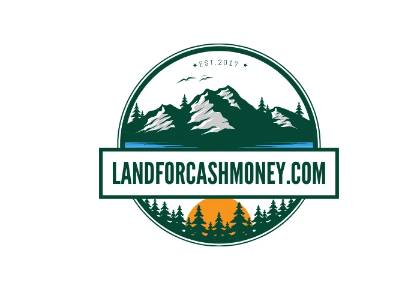
Is Washington Land a Good Investment?
Investing in land in Washington State is increasingly appealing for savvy investors. The state's diverse terrain and strong economy present unique opportunities in both urban and rural settings. Recent reports indicate that farmland values have grown by an average of 5.3% per year over the last five years, particularly in Eastern Washington's irrigated cropland, which has seen increases of up to 7% annually. Timberland prices have also risen by an average of 3.8% each year since 2018, further emphasizing the potential of Washington's land market.
Overview of the Washington Land Market
Land prices in Washington vary based on multiple factors, including location, terrain, zoning, and intended use. Urban areas, especially around cities like Seattle and Bellevue, command higher prices—averaging over $60,000 per acre in King County. In contrast, Eastern Washington offers more affordable land, with prices between $2,500 and $5,000 per acre for vacant lots far from urban centers.
While the market slowed down in 2022 due to rising interest rates, Washington's land values have historically appreciated, roughly doubling every decade since the 1990s. Population growth is a significant driver, with the Seattle area adding over 235,000 residents from 2010 to 2020, resulting in increased demand for developable land.
Prime Locations to Buy Land in Washington
Here are some top regions for investing in Washington land:
Seattle Metro Area
Despite its high prices, the growth trajectory around Seattle signals significant potential. Parcels within an hour of downtown may eventually be developed, making even marginal acreage valuable over the long term.
Spokane
This urban center in Eastern Washington has seen a 13% population increase from 2010 to 2020, offering more affordable land prices with a promising growth outlook. Outlying areas and farmland near Spokane represent strategic investment opportunities.
Tri-Cities
Comprising Kennewick, Pasco, and Richland, this area is among the state's fastest-growing metropolitan regions due to the tech and healthcare sectors. Outside city limits, land is still available for around $5,000 per acre.
Vancouver, WA
Just across the river from Portland, OR, Vancouver is transitioning into a thriving mid-sized metro area. The population rose 21% from 2010 to 2020, making land purchases relatively advantageous despite the higher costs.
Yakima Valley
Known for its agricultural outputs, including a thriving wine industry, Yakima Valley presents opportunities for investment in vineyards and irrigated farmland, especially with the increasing global demand for food.
Eastern WA Rangeland
Large plots of grazing land can be found throughout Eastern Washington, often priced below $1,000 per acre, making them an affordable investment option.
Factors to Consider When Buying Land in Washington
Before purchasing land, consider the following:
- Zoning: Understand current zoning laws and potential restrictions.
- Access: Ensure legal access points to the property.
- Utilities: Assess the availability of essential services, as extending municipal utilities can be costly.
- Environmental Issues: Investigate any existing contamination or regulations affecting land usage.
- Water Rights: Verify water rights for agricultural land, as they directly impact usability.
- Timber Value: Professional evaluations can determine additional land value through timber.
- Mineral Rights: Know the status of subsurface rights, as they may be separate from land ownership.
- Easements: Identify any existing easements affecting the property.
- Taxes: Be aware of property tax variations across different counties.
- Permitting: Research potential permitting requirements for development projects and plan for potential complications.
Tips for Buying Land Wisely
To maximize your investment, incorporate these strategies:
- Analyze comparable sales to gauge fair market value.
- Work with experienced real estate professionals to streamline the buying process.
- Be conservative in your financial estimations, factoring in potential market fluctuations.
- Look for properties in distress situations for better pricing opportunities.
- Prioritize usable, accessible land to increase attractiveness and marketability.
- Focus on future growth areas to ensure long-term value.
- Consider properties with multiple potential uses for increased appreciation.
- Keep zoning regulations in mind when aiming for intended uses, and be prepared to hold if necessary.
- Recognize the value of recreational properties, including water access and remote locations.
Final Thoughts
Washington presents a wealth of investment opportunities with its dynamic economy and natural beauty. However, the complexity of the local land market requires careful research and strategic planning. By targeting growth areas, buying at favorable rates, and engaging experts, investors can lay the groundwork for fruitful long-term wealth through land ownership.
Frequently Asked Questions (FAQs)
What types of land make the best investments in Washington?
Look for parcels near expanding urban areas or agricultural land in established farming regions. Waterfront and recreational properties are also increasingly desirable.
What is the timeline to profit from investing in land?
Investors typically see substantial returns within 5 to 10 years, often following significant development or zoning changes.
What are the main risks of buying Washington land as an investment?
Consider market fluctuation risks, potential zoning laws, and possible environmental liabilities that may complicate returns.
What is the best strategy for buying land at a discount in Washington?
Seek distressed properties through auctions, foreclosures, or direct negotiations with motivated sellers for optimal pricing.
Should I buy land on my own or use a company like Land For Cash Money?
Novice investors can benefit from the guidance and expertise of a land acquisition firm, which assists in navigating the complexities of purchasing land.



